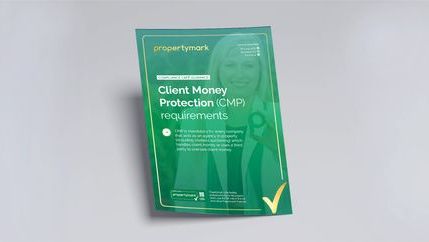
This Primary Authority Advice has been produced by Warwickshire County Council Trading Standards Service, in partnership with The Property Ombudsman and Propertymark, for use by member businesses as an aid to complying with the law. If you follow this advice correctly, your local Trading Standards Service should respect this and not ask you to comply with the law in a different way. If you are contacted by a local authority enforcement body, please inform them that you are a member of the scheme.
Assured advice issued:
Do you have any guidance on the use of images that may predate the advertising of the property and, for example, may accurately represent the property at a point in time after refurbishment but which may not reflect the actual state of the property after several years of occupation and wear and tear?
The relevant law here is The Consumer Protection from Unfair Trading Regulations 2008 which controls the use of images and photos. The legislation prohibits a misleading action (description). The legislation also prohibits a misleading omission.
In relation to the misleading action the test to apply is whether the image / photo contains false information or its overall presentation in any way deceives or is likely to deceive the average consumer (even if the information is factually correct). In order to be a misleading action it must also cause the average consumer to take a transactional decision they would not have otherwise taken.
In relation to a misleading omission the test to apply is whether the image / photo omits, hides or is unclear, unintelligible, ambiguous or untimely. An assessment of whether the image / photo presents a misleading omission is judgement that can only be made on the facts of each case.
The law requires the following to be taken into account – the circumstances of the image / photo, the limitations of the medium used to communicate. Where there are limitations, consideration should be given to any measures taken by the trader to make the information available to consumers by other means.
The omissions must also cause the average consumer to take a transactional decision they would not have otherwise taken.
Given the above any image / photo used should be assessed (each time it is used) so that the user can be certain is accurately represents the property. It is natural the fabric and / or condition of property will deteriorate or change with the passage of time. It may be that adjacent buildings are added or removed. All these factors need to be assessed individually.
If an image / photo is not an accurate representation of the property it must no longer be used.
Can you also provide guidance on the repeated use of the same image of a refurbished room, for example, over a number of properties marketed by the same agency?
If an image / photo of a refurbished room is used indiscriminately it is likely to be a misleading action or a misleading omission. This would almost certainly be the case where it is used for different properties.
To be an offence it would have to be proven that this would cause the average consumer to take a transactional decision they would not have otherwise taken.
Is any type of disclaimer contained within the particulars, for example - "photographs are for indicative purposes only" - likely to be effective? Could these practices be balanced by a notice or disclaimer to the potential purchaser/renter?
Firstly images / photos should not be used which are considered to amount to a misleading action or misleading omission.
Indiscriminate use of images / photos would almost certainly not comply with the Consumer Protection from Unfair Trading Regulations 2008 in relation to a misleading action (description).
Similarly, indiscriminate use of images and photos would almost certainly not comply with the Consumer Protection from Unfair Trading Regulations 2008 in relation to a misleading omission. It is probable that in some circumstances the use of an image / photo will have limitations in the information it can portray. In these circumstances the user should make the information known to consumers by other means.
It is not satisfactory to make a description (within an image / photo) and then disclaim it.
Case law has addressed the use of disclaimers – in Norman v Bennett [1974] 3 All ER 351, Widgery LCJ said:
"Where a false trade description is attached to goods, its effect can be neutralised by an express disclaimer or contradiction of the message contained in the description. To be effective any such disclaimer must be as bold, precise and compelling as the trade description itself and must be as effectively brought to the notice of any person to whom the goods may be supplied. In other words, the disclaimer must equal the trade description in the extent to which it is likely to get home to anyone interested in receiving the goods."
In other case law in R v Southwood [1987] 3 All ER 556 it was established that disclaimers cannot be used too liberally – a disclaimer cannot be used to convert a lie into a truth.
If a single property development has a range of accommodation and an image / photo is used which does not represent all accommodation within the development - consideration should be given to any measures taken by the trader to make the information available to consumers by other means.
Download the full version
Download the full version of this advice to see what legislation and guidance Warwickshire County Council Trading Standards Service considered before providing this advice.





